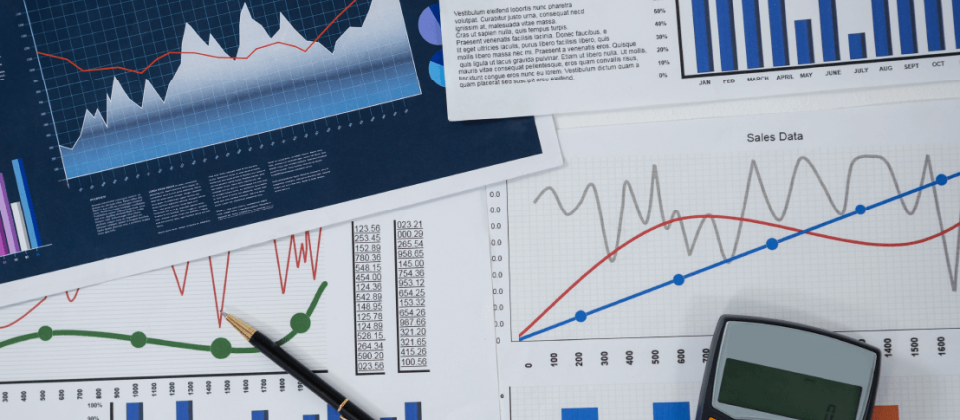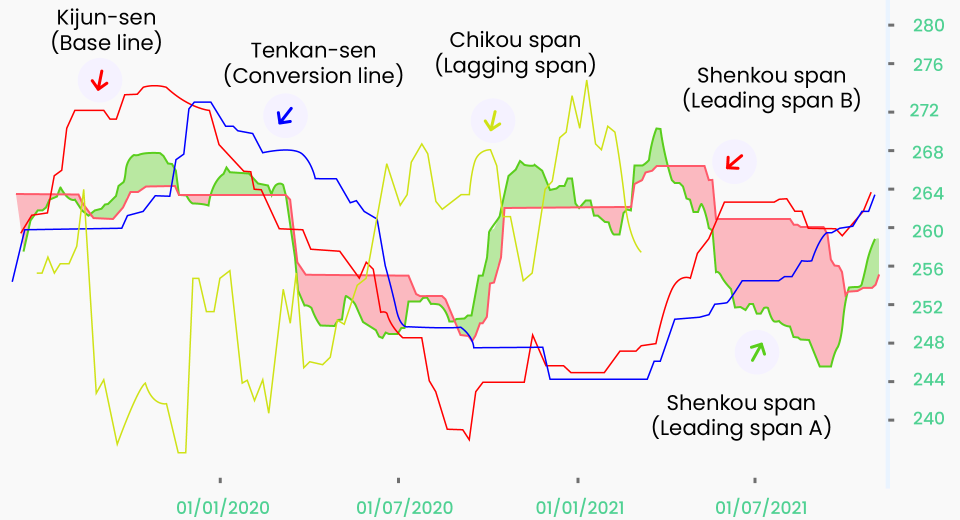Indices represent standardised measurements to track the performance of a group of assets. The most popularly traded one are stock indices, as these are used by traders to diversify their portfolios and gain exposure to the stock market without the risks associated with individual stocks. If you are considering trading indices to strengthen your portfolio diversification or gain exposure to a specific stock market, here are the top 3 things you must know.
#1 – The Most Popular Indices
Economic data releases act as mirrors of the economic health of a nation. These events impact both trader sentiment and the financial market. As a result, they are among the most important factors affecting trading. Whether you are a swing trader, a scalper or an investor with a longer-term horizon, an economic calendar is a key tool in your arsenal. It is the list of all data releases (upcoming and completed) along with the information from the previous report and expectations for the one up next. Read on for a better understanding of these economic data releases and how to use them in popular trading strategies.
Two Types of Economic Data Releases
Often a country’s monetary policy is decided based on economic reports. Therefore, traders try to speculate market movements based on economic data releases.
Lagging Indicators
These releases are related to what happened in a particular domain in the previous month, quarter, or year. Although they indicate what has already happened, they provide an insight into how the economy is going to perform in the future.
The top 5 lagging indicators are:
- Gross Domestic Product (GDP)
- Consumer Price Index (CPI)
- Unemployment Rate
- Central Bank Interest Rate Announcements
- Balance of Trade
Did you know?
The US non-farm payroll (NFP) report, which is released on the first Friday of every month, is the single most impactful economic data release that affects almost all financial instruments across the globe.
Leading Indicators
These indicators suggest what to expect from consumer behaviour or the economy in general. Often referred to as input-oriented indicators, these data releases help traders plan their positions.
The top 5 leading indicators are:
- Jobless Claims
- Consumer Credit
- Purchasing Manager’s Index (PMI)
- Employment Data
- Wage Reports
How Markets Respond to Economic Reports
Market action is a function of several factors, including the geopolitical atmosphere, the deviation of the actual values from the analyst estimates, and whether other indicators support or contradict a particular trend. Markets may act differently before, during, and after a data release.
Before the Release
Financial analysts and economic experts forecast a value for each release, considering diverse factors. Traders keep an eye on these predictions, as they are indicative of what experts believe is the condition of the economy and labour markets.
During a Release
Markets can become volatile during a release. Trader sentiment is impacted by the divergence of the actual data from the forecast. The greater the deviation, the more traders are likely to change their trading decisions. A better-than-expected release supports market sentiment and favours riskier assets like stocks and indices. A disappointing release creates concern and favours safe-haven assets. Whatever the direction, a divergence increases market volatility, and is a time when scalpers and day traders are most active.
After a Release
After the data is out, the markets may digest the news in different ways. For example, a high GDP number could mean inflation, signalling higher interest rate hikes by the central bank, which strengthens the currency. On the other hand, a good GDP number also supports risk assets, diverting funds from more stable to exotic currency pairs and stocks.
Did you know?
On February 23, 2023, the US reported a decline in weekly jobless claims by 3,000 to 192,000, versus market expectations of 200,000. The better-than-expected data sent gold prices to weekly lows, while the S&P 500 index snapped a four-session losing streak and ended the day with gains.
Risks of High Impact Data Release
Panic shorting is the most common trading activity that stirs the market after a data release fails to match expectations. This happens when traders sell an asset in large numbers during the few minutes following a disappointing release. This leads beginners to believe that selling the asset is the right thing to do, intensifying the sell-off, while seasoned traders view this as an opportunity to go long.
Did you know?
Economic calendars also mark the events as high, medium, or low impact to help traders identify which ones to pay the most attention to while making trading decisions.
Strategies to Trade Economic Data Releases
Trading strategies based on the three timeframes of an economic release are called calendar trading techniques. Here are a few:
Pre-Trading
Certain asset classes experience higher trading activity right before important data releases. Traders identify such instruments and use them to enhance their trading. Traders use values from the previous release, the trend the values indicate, and the forecast data from the economic calendar to open positions before the economic events.
Buy the Rumour Sell the News
This is a little tricky. The goal is to take positions based on analyst reports about an upcoming data release such that they get triggered if the data released is in-line with the prediction. For instance, traders who predict the asset valuation to increase in response to a data release buy the asset in advance and sell it when the news is out. They often create pending orders to make the most of the opportunity. Setting stop loss and take profit limits becomes critical to manage risk in the case of an unfavourable data release.
Sit It Out
Often conservative traders or beginners skip trading around economic data releases and wait for the markets to respond to the news before opening positions. Two popular ways to do this are:
- Avoid taking positions 15 – 30 minutes before the data release to 15 – 30 minutes after the announcement.
- Wait till a few minutes after the data is released, and trade during the fading market activity to capitalise on the volatility, as the risk of unpredictability is considerably lower at this time.
To Sum Up
- Economic data releases impact all financial markets.
- The reports can be leading or lagging indicators of the state of an economy.
- Often, a country’s monetary policy is a response to data releases, which makes them even more important for forex and stock traders.
- Traders may take positions before, during, or after a calendar event.
- Novice traders may practise on a demo account to build a trading strategy while they sit out the live markets, till they better understand the impact of releases.
Disclaimer:
All data, information and materials are published and provided “as is” solely for informational purposes only, and is not intended nor should be considered, in any way, as investment advice, recommendations, and/or suggestions for performing any actions with financial instruments. The information and opinions presented do not take into account any particular individual’s investment objectives, financial situation or needs, and hence does not constitute as an advice or a recommendation with respect to any investment product. All investors should seek advice from certified financial advisors based on their unique situation before making any investment decisions in accordance to their personal risk appetite. Blackwell Global endeavours to ensure that the information provided is complete and correct, but make no representation as to the actuality, accuracy or completeness of the information. Information, data and opinions may change without notice and Blackwell Global is not obliged to update on the changes. The opinions and views expressed are solely those of the authors and analysts and do not necessarily represent that of Blackwell Global or its management, shareholders, and affiliates. Any projections or views of the market provided may not prove to be accurate. Past performance is not necessarily an indicative of future performance. Blackwell Global assumes no liability for any loss arising directly or indirectly from use of or reliance on such information herein contained. Reproduction of this information, in whole or in part, is not permitted.





